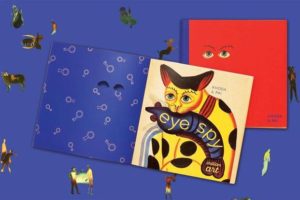Venita Coelho’s “Boy No. 32” wins prestigious Hindu Goodbooks Award for best fiction!
Screenwriter and young adult fiction writer Venita Coelho won the prestigious Hindu Goodbooks Award today at the ongoing Hindu Lit for Life festival in Chennai. Daniel Handler, author of the Lemony Snicket series, did the honours of handing over the trophy. Some glimpses of the evening are given in the gallery of photographs.
Meanwhile Shantanu Duttagupta, Publisher, Scholastic India who has published Venita Coelho’s award winning novel had this to say:
On 1 January 2018 I had interviewed Venita Coelho. Her young adult novel Boy No. 32 is an incredibly gripping book about Battees, an orphan named so after the number given to him — 32. ( In Hindi, the number 32 is called “battees”.) The story is about Battees winessing the presence of a dreaded terrorist, Kashmiri Lall, in his city, Mumbai, and he is now the only one who can help put him behind bars. It is a tremendously well-paced and tautly written book. Impossible to put down once you begin it. Also for the fact Venita Coelho never for an instant “talks down” to youngsters, nor is ever apologetic about the violence around us. Absolutely fantastic!
In this novel intermixing the orphans’ quest for locating Kashmiri Lall with encounters with the eunuchs, the Beggar King, and the horrific complicity of even the adults responsible for them such as Aunty and the cop, is done crisply. The “traditional” bad guys of literature like the eunuch are actually shown to be humane with a little more insight on how their community operates. Equally well-made are the cop and the “aunty” who are so incredibly corrupt, they would do anything for a few extra bucks. Venita Coelho is constantly challenging pre-conceived notions about characters. For instance, instead of giving the warden of the orphanage a name, she is referred to as “Aunty” — a big learning curve for Indian readers who are taught to practically revere an older woman, inevitably calling her “Aunty”, sort of seals this relationship.
Boy No. 32 is highly recommended!
13 January 2019








